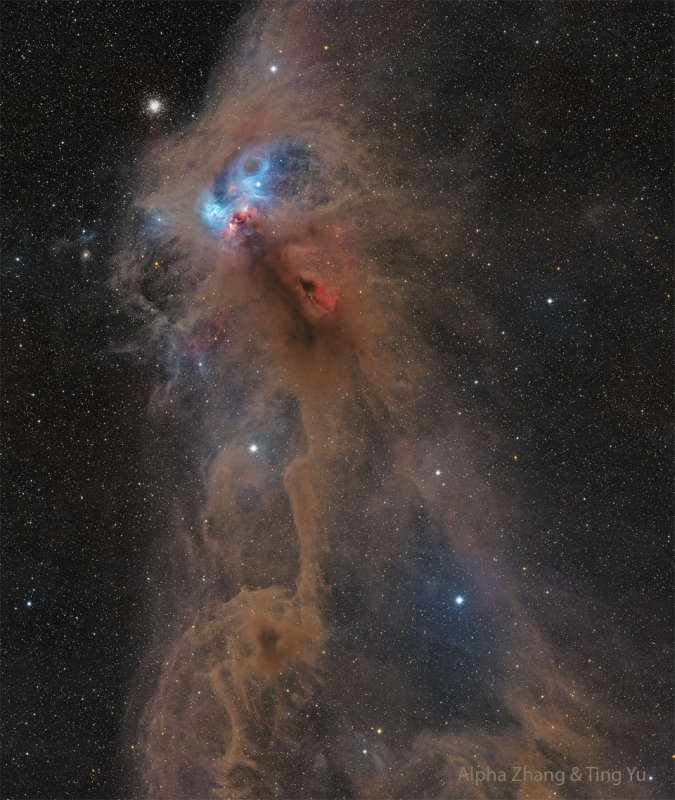Credit & Copyright: Alpha Zhang
&
Ting Yu
Explanation:
This dusty region is forming stars.
Part of a sprawling
molecular cloud
complex that
resembles, to some, a rampaging
baboon,
the region is a relatively close by 500
light-years away
toward the constellation
Corona Australis.
That's about one third the distance of the more famous
stellar nursery known as the
Orion Nebula.
Mixed with bright nebulosities, the brown
dust clouds
effectively block light from more distant background stars in the
Milky Way and
obscure from view
embedded stars still in the process of formation.
The eyes of the
dust creature in the
featured image are actually blue
reflection nebulas
cataloged as
NGC 6726, 6727, 6729, and
IC 4812,
while the red mouth glows with
light emitted by hydrogen gas.
Just to the upper left of the baboon's head is
NGC 6723,
a whole
globular cluster
of stars nearly 30,000 light years in the distance.
Explore Your Universe:
Random APOD Generator
1999 2000 2001 2002 2003 2004 2005 2006 2007 2008 2009 2010 2011 2012 2013 2014 2015 2016 2017 2018 2019 2020 2021 2022 2023 2024 2025 |
Yanvar' Fevral' Mart Aprel' Mai Iyun' Iyul' Avgust Sentyabr' Oktyabr' Noyabr' Dekabr' |
NASA Web Site Statements, Warnings, and Disclaimers
NASA Official: Jay Norris. Specific rights apply.
A service of: LHEA at NASA / GSFC
& Michigan Tech. U.
|
Publikacii s klyuchevymi slovami:
dust cloud - pylevoe oblako - otrazhatel'nye tumannosti
Publikacii so slovami: dust cloud - pylevoe oblako - otrazhatel'nye tumannosti | |
Sm. takzhe:
Vse publikacii na tu zhe temu >> | |
